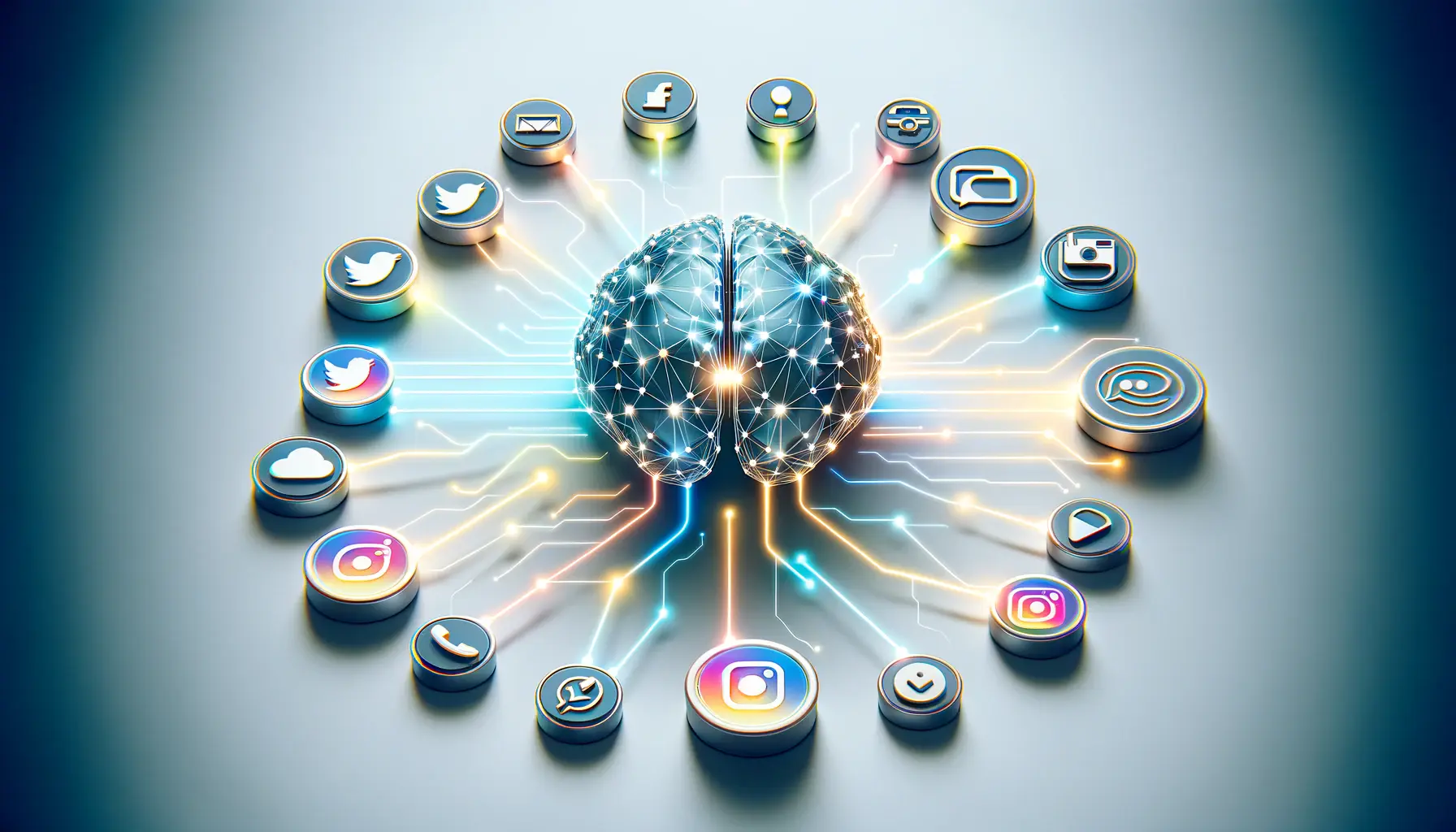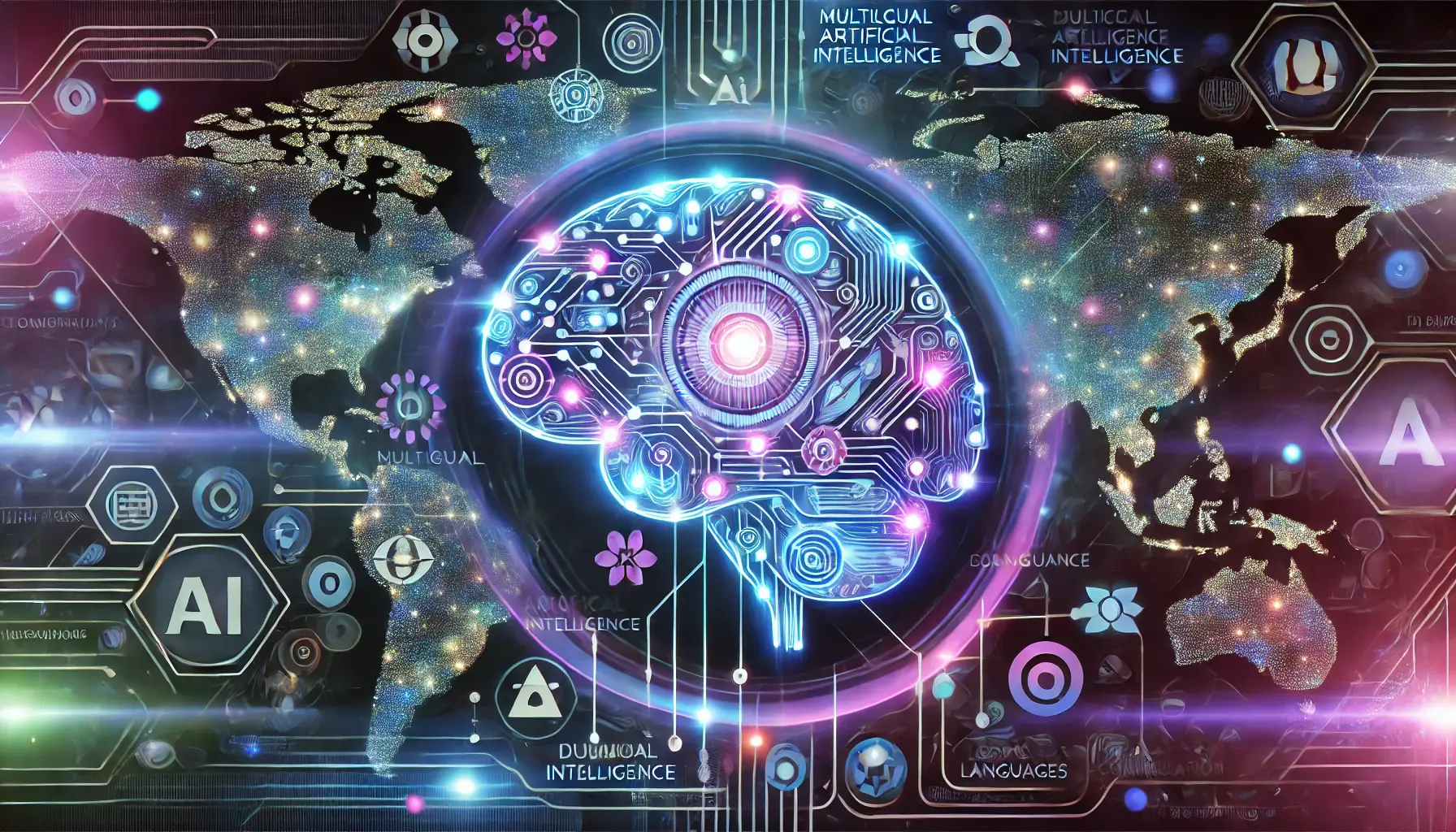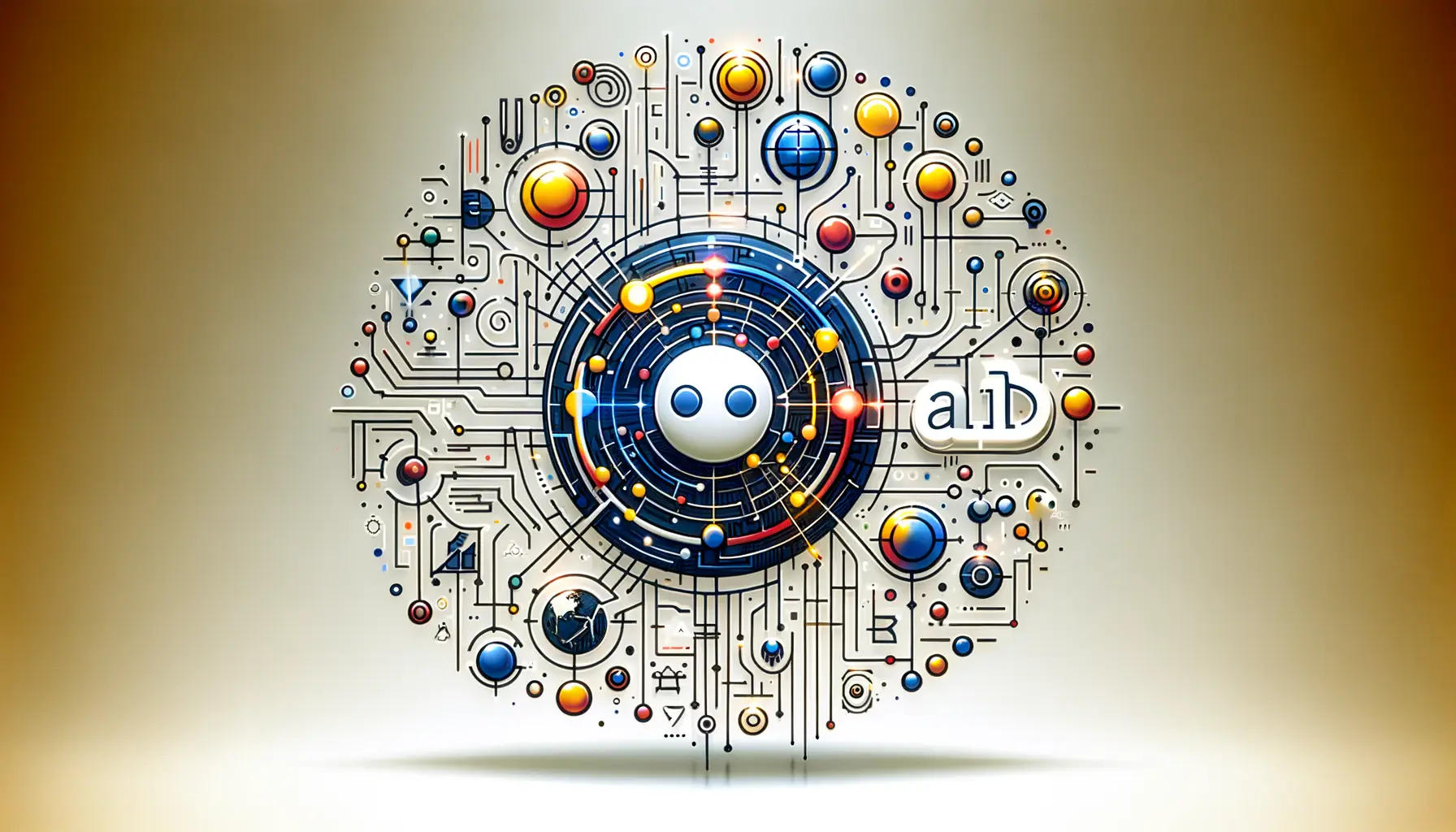The digital landscape is continuously evolving, with artificial intelligence (AI) playing a pivotal role in shaping the future of online interactions and content creation.
Among the forefront of these advancements is Google’s Bard, an innovative AI tool designed to simulate human-like conversations and generate content with remarkable accuracy.
Its integration with social media platforms marks a significant leap towards a more interconnected and intelligent digital ecosystem.
This integration not only enhances user experience but also opens up new avenues for content creation, data analysis, and digital marketing strategies.
As we delve into the integration of Google’s Bard with social media platforms, it’s essential to understand the implications and opportunities it presents.
This fusion aims to leverage Bard’s advanced language models and generative capabilities to enrich social media content, streamline communication, and provide personalized user experiences.
The collaboration between Google’s Bard and social media platforms is not just a technical enhancement; it’s a transformative shift that redefines how we interact, share, and consume content online.
- Google’s Bard and Its Capabilities
- The Impact of Bard on Content Creation and Distribution
- Personalization and User Experience Enhancement
- Challenges and Considerations in Integration
- Future Prospects of AI in Social Media
- Strategies for Leveraging Bard in Social Media Marketing
- Improving Customer Service and Engagement
- Embracing the Future: The Integration of Google’s Bard with Social Media Platforms
- FAQs on Google Bard’s Integration with Social Media
Google’s Bard and Its Capabilities
What is Google’s Bard?
Google’s Bard is a cutting-edge AI chatbot developed by Google, designed to understand and generate human-like text based on the input it receives.
It utilizes advanced natural language processing (NLP) and machine learning algorithms to provide responses that are not only relevant but also contextually rich.
Bard’s primary aim is to assist users in generating content, answering queries, and facilitating a more natural interaction with technology.
The tool stands out for its ability to process vast amounts of information and generate responses that can mimic human thought processes.
This capability makes Bard an invaluable asset in various fields, including education, customer service, and especially in the realm of social media, where engaging and timely content is king.
Integration with Social Media Platforms
The integration of Google’s Bard with social media platforms is a game-changer for content creators, marketers, and everyday users.
By harnessing Bard’s generative AI, social media platforms can offer more personalized content recommendations, automate responses to user inquiries, and create more engaging and interactive posts.
This integration allows for a seamless blend of AI’s analytical power with the creative and dynamic nature of social media content.
For instance, Bard can analyze trending topics and generate content suggestions that are tailored to the interests and preferences of the user base.
This not only enhances user engagement but also provides content creators with insights and tools to produce more relevant and captivating content.
The integration of Google’s Bard with social media platforms revolutionizes how we create, share, and interact with content, making the digital space more dynamic and personalized.
The Impact of Bard on Content Creation and Distribution
The advent of AI technologies like Google’s Bard is transforming the landscape of content creation and distribution on social media platforms.
This transformation is not just about automating processes but enhancing creativity and personalization in content that reaches audiences globally.
Let’s delve into how Bard’s integration impacts these critical aspects of social media.
Enhancing Creativity in Content Creation
One of the most significant impacts of Bard’s integration is on the creativity of content generated for social media.
Bard’s AI capabilities enable it to understand context, generate ideas, and even suggest content formats that might appeal to specific audiences.
This leads to a more diverse and creative output, as content creators can leverage Bard’s suggestions to experiment with new concepts and presentation styles.
- Personalized Content Suggestions: Bard can analyze user preferences and engagement metrics to suggest content topics and formats that are more likely to resonate with the audience.
- Automated Content Generation: For routine posts or updates, Bard can automate content creation, allowing creators to focus on more strategic or creative tasks.
Streamlining Content Distribution
Bard’s integration also streamlines the distribution of content across social media platforms.
By understanding the nuances of each platform’s audience and the type of content that performs well, Bard can assist in optimizing posts for better engagement and reach.
This includes suggesting the best times to post, the right hashtags to use, and even the tone of voice that should be employed for different platforms.
- Optimized Posting Schedules: Bard can analyze engagement data to recommend the most effective times for posting content, ensuring maximum visibility.
- Targeted Content Strategies: With Bard’s insights, content creators can tailor their strategies to target specific segments of their audience more effectively.
Integrating Bard into social media platforms not only automates content creation and distribution but also infuses a level of creativity and personalization previously unattainable, significantly enhancing the social media experience for both creators and users.
Personalization and User Experience Enhancement
The integration of Google’s Bard with social media platforms has ushered in a new era of personalized user experiences.
By leveraging AI’s understanding of individual preferences and behaviors, social media platforms can now offer content and interactions that are uniquely tailored to each user.
This level of personalization not only improves user engagement but also fosters a more intimate and satisfying social media experience.
At the heart of this transformation is Bard’s ability to analyze vast datasets, understanding user interactions, content preferences, and even the subtleties of language used in posts and comments.
This analysis enables Bard to curate content feeds, suggest connections, and even predict what kind of content a user might want to create or consume next.
Curating Personalized Content Feeds
One of the most visible impacts of Bard’s integration is on the content that users see on their feeds.
By understanding each user’s interactions and preferences, Bard can help platforms curate feeds that are highly personalized, showing more of what users like and less of what they don’t.
This not only makes the social media experience more enjoyable but also more engaging, as users are more likely to interact with content that resonates with them.
- Enhanced Content Discovery: Bard can introduce users to new content creators and topics based on their interests and past interactions, broadening their social media experience.
- Dynamic Content Adjustment: As user preferences evolve, Bard can adjust content feeds in real-time, ensuring that the user experience remains relevant and engaging.
Improving Interaction Quality
Beyond content curation, Bard’s integration enhances the quality of interactions on social media platforms.
By generating responses or suggestions for comments and posts, Bard can facilitate more meaningful and engaging conversations.
This capability is particularly beneficial in fostering community spirit and keeping discussions lively and constructive.
- Automated Response Suggestions: Bard can offer users suggestions for responses to comments or posts, helping to maintain active and engaging conversations.
- Language Translation and Interpretation: For global platforms, Bard can assist in breaking down language barriers, making it easier for users from different backgrounds to interact.
The integration of Bard into social media platforms significantly enhances personalization and user experience, making social media more engaging, enjoyable, and tailored to individual users.
Challenges and Considerations in Integration
While the integration of Google’s Bard with social media platforms offers numerous benefits, it also presents several challenges and considerations.
These range from technical hurdles to ethical concerns, all of which need careful navigation to ensure the successful and responsible use of AI in social media contexts.
Understanding these challenges is crucial for developers, content creators, and platform administrators alike, as it helps in crafting strategies that maximize the benefits of Bard’s capabilities while mitigating potential downsides.
Privacy and Data Security
One of the foremost concerns with integrating advanced AI like Bard into social media platforms is the issue of privacy and data security.
Given Bard’s need to access and analyze vast amounts of user data to function effectively, ensuring that this data is handled securely and in compliance with privacy laws is paramount.
Users need assurances that their data is not only safe but also used ethically and transparently.
- Data Encryption and Anonymization: Implementing robust encryption and anonymization techniques to protect user data from unauthorized access.
- Compliance with Privacy Regulations: Adhering to global privacy regulations such as GDPR and CCPA to ensure users’ data rights are respected.
Accuracy and Reliability of AI-generated Content
Another significant challenge is ensuring the accuracy and reliability of the content generated by Bard.
While Bard’s AI is sophisticated, it’s not infallible and can produce errors or biased content.
This necessitates the implementation of oversight mechanisms to monitor and correct AI-generated content, ensuring it meets the standards of accuracy and impartiality expected on social media platforms.
- Regular Monitoring and Review: Establishing processes for the regular monitoring and review of AI-generated content to quickly identify and correct inaccuracies or biases.
- User Feedback Mechanisms: Incorporating user feedback into the content review process to help identify issues with AI-generated content.
Addressing the challenges and considerations in integrating Bard with social media platforms is essential for harnessing the full potential of AI while maintaining user trust and platform integrity.
Future Prospects of AI in Social Media
The integration of technologies like Google’s Bard into social media platforms is just the beginning of a broader transformation.
The future of AI in social media holds immense potential, promising to further revolutionize how we interact, create, and consume content online.
As we look ahead, several key areas are poised for significant developments, driven by continuous advancements in AI and machine learning.
This forward-looking perspective not only highlights the potential for innovation but also underscores the importance of addressing current challenges to pave the way for a more integrated, intelligent, and user-centric social media landscape.
Advancements in Personalization and Interactivity
One of the most exciting prospects is the further enhancement of personalization and interactivity on social media platforms.
AI technologies like Bard will become even more adept at understanding user preferences, behaviors, and contexts, enabling platforms to offer unprecedented levels of personalized content and interactive experiences.
This could include more nuanced content recommendations, interactive AI-powered features, and even virtual reality (VR) and augmented reality (AR) integrations that offer immersive social media experiences.
- Dynamic Content Adaptation: AI could dynamically adapt content and interfaces based on real-time user feedback, creating a more responsive and engaging user experience.
- Immersive Experiences: Integration with VR and AR technologies could transform social media into more immersive and interactive spaces, offering new ways for users to connect and share experiences.
Enhancing Content Creation and Distribution
The role of AI in content creation and distribution is also set to expand, with technologies like Bard offering more sophisticated tools and insights for content creators and marketers.
This includes advanced analytics for understanding audience engagement, AI-driven content optimization for higher reach and impact, and automated content creation tools that can produce high-quality, relevant content at scale.
- Automated Content Optimization: AI could offer real-time suggestions for optimizing content for different platforms and audiences, increasing engagement and reach.
- Scalable Content Production: Advanced AI tools could enable the production of large volumes of personalized content, meeting the demands of diverse audiences without compromising quality.
The future of AI in social media is bright, with advancements in personalization, interactivity, and content creation set to redefine the digital landscape, making it more engaging, inclusive, and creative.
Strategies for Leveraging Bard in Social Media Marketing
In the realm of social media marketing, the integration of Google’s Bard offers a plethora of opportunities for brands and marketers to enhance their online presence and engagement.
By strategically leveraging Bard’s capabilities, marketers can create more impactful, relevant, and personalized marketing campaigns.
Here, we explore key strategies that can help maximize the potential of Bard in social media marketing efforts.
Understanding and applying these strategies effectively can transform how brands interact with their audience, offering a more customized and interactive experience that drives engagement and loyalty.
Creating Dynamic and Personalized Content
At the core of leveraging Bard for social media marketing is the ability to create dynamic and personalized content.
Bard’s AI can analyze audience data, preferences, and engagement patterns to generate content ideas and suggestions that resonate with the target audience.
This enables marketers to craft messages and content that are not only relevant but also highly engaging, increasing the likelihood of interaction and conversion.
- Targeted Campaigns: Use Bard to analyze audience segments and create tailored campaigns that speak directly to the interests and needs of different groups within your audience.
- Content Variation: Employ Bard to generate a variety of content formats, from text and images to videos, ensuring a rich and engaging content mix that appeals to a broad audience spectrum.
Optimizing Social Media Engagement
Beyond content creation, Bard can play a crucial role in optimizing engagement strategies on social media platforms.
By understanding the nuances of audience interactions and platform algorithms, Bard can help marketers identify the best times to post, the most effective content types, and even predict trending topics.
This strategic insight allows for the optimization of engagement tactics, ensuring that content reaches its intended audience with maximum impact.
- Engagement Analysis: Leverage Bard to analyze engagement data, identifying patterns and trends that can inform future content strategies and engagement tactics.
- Interactive Features: Utilize Bard to introduce interactive elements into your content, such as polls, quizzes, and Q&As, to foster a more engaging and participatory experience for the audience.
By embracing Bard’s AI capabilities, social media marketers can unlock new levels of personalization, engagement, and efficiency in their campaigns, setting new standards for what is possible in digital marketing.
Improving Customer Service and Engagement
The integration of Google’s Bard into social media platforms has significant implications for customer service and engagement.
In today’s digital age, consumers expect prompt, efficient, and personalized interactions with brands on social media.
Bard’s AI capabilities can transform how businesses meet these expectations, offering innovative solutions that enhance customer satisfaction and loyalty.
By leveraging Bard, businesses can automate and personalize customer interactions, provide instant support, and gather insights to improve service quality.
This section explores how Bard can be utilized to elevate customer service and engagement on social media platforms.
Automating Customer Interactions
One of the key benefits of Bard’s integration is the automation of routine customer interactions.
This includes answering frequently asked questions, providing product information, and guiding users through basic troubleshooting steps.
Automation not only improves efficiency but also ensures that customers receive immediate responses, enhancing their overall experience with the brand.
- Instant Support: Implement Bard-powered chatbots to offer 24/7 customer support, ensuring that customer inquiries are addressed promptly, regardless of the time of day.
- FAQ Automation: Use Bard to automate responses to common questions, freeing up customer service representatives to focus on more complex inquiries.
Personalizing Customer Experiences
Beyond automation, Bard can personalize customer interactions by tailoring responses based on the customer’s history, preferences, and behavior.
This level of personalization makes customers feel valued and understood, fostering a stronger connection with the brand.
Personalized interactions can lead to increased customer satisfaction, loyalty, and ultimately, higher conversion rates.
- Customized Recommendations: Bard can analyze a customer’s past interactions and preferences to offer personalized product recommendations, enhancing the shopping experience.
- Targeted Support: Utilize Bard to provide support that is specifically tailored to the individual’s current situation or inquiry, making customer service more effective and efficient.
Leveraging Google’s Bard for customer service and engagement on social media not only streamlines operations but also significantly enhances the quality of customer interactions, setting a new benchmark for digital customer service excellence.
Embracing the Future: The Integration of Google’s Bard with Social Media Platforms
The journey through the integration of Google’s Bard with social media platforms reveals a landscape brimming with potential and innovation.
This integration is not merely a technological advancement; it represents a paradigm shift in how we interact, create, and engage on social media.
The implications of this integration extend beyond the immediate enhancements to user experience and content creation, heralding a new era of digital communication that is more personalized, efficient, and interactive.
The Dawn of a New Digital Era
As we have explored, the integration of Bard into social media platforms is transforming the digital ecosystem in profound ways.
From revolutionizing content creation to personalizing user experiences and streamlining customer service, Bard’s capabilities are setting new benchmarks for what is possible online.
This transformation is not without its challenges, including concerns around privacy, data security, and the accuracy of AI-generated content.
However, the potential benefits and future prospects of AI in social media far outweigh these challenges, promising a future where digital interactions are more meaningful, engaging, and tailored to individual needs.
Key Takeaways and Future Directions
- Enhanced Creativity and Personalization: Bard’s integration facilitates a level of creativity and personalization in content creation and distribution that was previously unattainable, making social media platforms more dynamic and engaging.
- Revolutionizing Customer Service: By automating and personalizing customer interactions, Bard improves efficiency and customer satisfaction, setting a new standard for digital customer service.
- Challenges and Considerations: Addressing privacy, data security, and the accuracy of AI-generated content is crucial for maximizing the benefits of Bard’s integration while maintaining user trust.
- Future Prospects: The ongoing advancements in AI promise to further enhance personalization, interactivity, and content creation, redefining the social media landscape.
In conclusion, the integration of Google’s Bard with social media platforms is a testament to the transformative power of AI in shaping the future of digital communication.
As we navigate this new era, the focus must remain on leveraging these advancements responsibly and ethically, ensuring that the digital world remains a space for innovation, connection, and growth.
The journey ahead is filled with opportunities to redefine the essence of social media, making it more inclusive, engaging, and reflective of the diverse tapestry of human experience.
FAQs on Google Bard’s Integration with Social Media
Explore common questions about the innovative integration of Google Bard with social media platforms.
Google Bard is an AI chatbot designed to generate human-like text, enhancing content creation and interaction on digital platforms.
Bard integrates by offering personalized content creation, enhancing user engagement and streamlining customer service on platforms.
Yes, Bard can generate creative and personalized content for social media, tailored to audience preferences and trends.
Initially available in select regions, Bard’s availability is expanding, aiming for global access to its advanced AI capabilities.
By personalizing content feeds and interactions, Bard significantly enhances the user experience on social media platforms.
Yes, Bard can automate and personalize customer service interactions, providing efficient and tailored support.
Challenges include ensuring privacy, data security, and the accuracy of AI-generated content on social media platforms.
Bard promises advancements in AI-driven personalization, content creation, and interactive experiences on social media.













